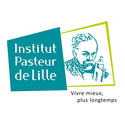In short
Despite decades of efforts and progress in the field, Tuberculosis (TB) remains one of the world’s most deadly infectious disease. Since 2014, the World Health Organisation is pursuing its ‘End TB’ strategy which aims to reduce TB incidence by 90% in 2035. Many complicating factors are standing in the way of this ambitious goal, first and foremost being relapsed infections of multidrug resistant (MDR-TB) strains, 10% of which are extensively drug resistant (XDR-TB). MDR-TB strains are treated with so-called second-line antibiotics.
The goal of this project is to understand the molecular mechanisms behind the emergence of resistance against these second-line drugs. We analyse resistant M. tuberculosis strains, and hunt for changes in their DNA which make them resistant to antibiotics. This knowledge enables us to develop rapid identification methods for resistant strains, and to follow their transmission. It can also be used to improve the antibiotic itself, because it can be changed as such that it becomes insensitive for the resistance mechanism developed by the bacterium.
Project description
This project focuses on two research lines:
- Characterisation of molecular mechanisms associated with the pharmacoresistance of M. tuberculosis (TB). This analysis is performed on both well-characterized M. tuberculosis clinical isolates and spontaneous mutants resistant to the studied antibiotic.
- Evaluation of the therapeutic activity of new molecules. Our mission is to evaluate in vitro and in vivo the efficacy of new antituberculous compounds. For the in vivo tests, we use two different animal models: mice and rats.
Sciensano's project investigator(s):
Service(s) working on this project
Partners







